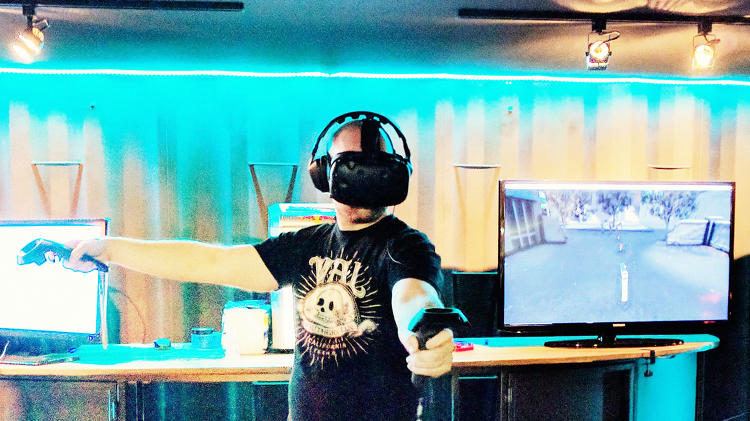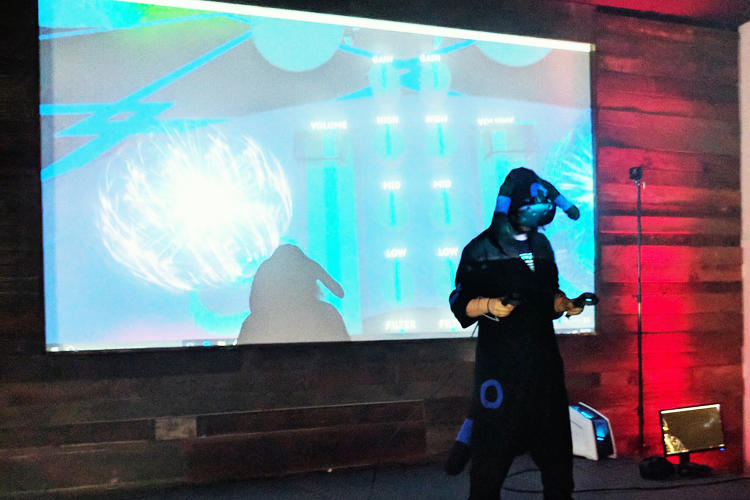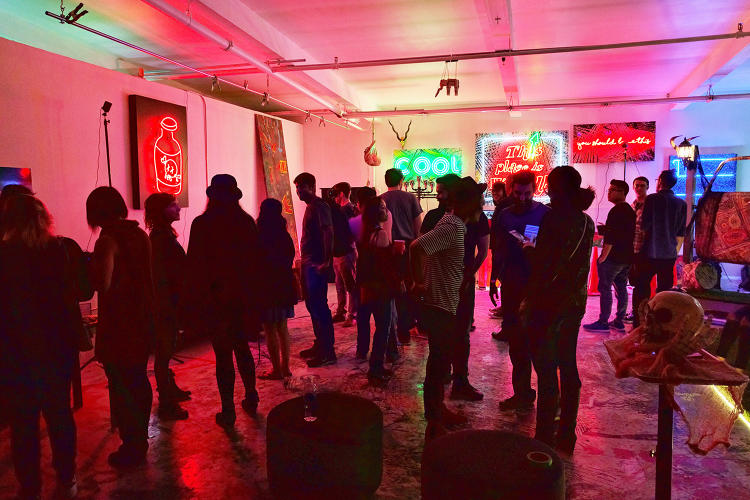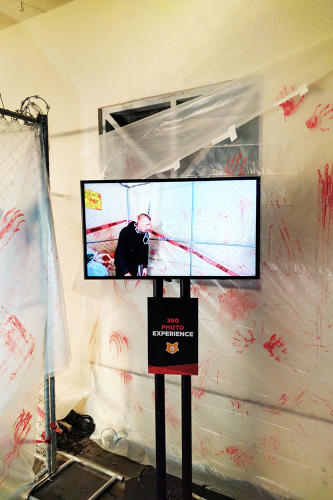Inside Los Angeles’ Virtual Reality Haunted House
In the days before Halloween, a sprawling, 26,000-square-foot Los Angeles coworking space called Ctrl Collective took on an unexpected twist: It became a virtual reality haunted house dance party.
The event, the VRScout Haunted Mansion, was more than just an excuse for southern California’s VR community to hit the open bar—it was also an informal meet and greet between the techie developers, Hollywood investors, and visionary artists who are turning the Los Angeles area into one of the world’s most fertile hotbeds of VR development. Proceeds from the haunted house were donated to literacy organization 826LA.
Approximately 1500 visitors stopped by the haunted house, which included eight room-size horror virtual reality environments and 12 scary virtual reality movies and art installations.
According to Jonathan Nafarrete of VRScout, the organization that put on the event, “The lay of land was five little rooms with different experiences. There are tabletops with Gear VR headsets to check out content on that, a main stage with a DJ spinning in virtual reality, and an artist painting in Tilt Brush next to him with a giant 360-degree dome projecting art on top of it. There’s also a 360-degree photo experience, which is a normal photo booth that puts you in a zombie research facility. Your picture is taken inside a holding pen and is then shared on Facebook as a 360-degree photo.”
Virtual reality content shown at the haunted house ranged from homegrown projects to big-budget scare pieces tied to multimedia brands like vampire television show/book The Strain and the Paranormal Activity movies. Charles Hu of digital studio Fishermen Labs said that his company built their zombie game, Ctrl Collective: Last Stand, over the course of two months as a passion project. Fishermen is based at the massive Ctrl Collective co-working space (which includes many hallways and outdoor areas). They designed the game to have players experience a zombie attack inside their own office building.
I played (participated?) in quite a few of the virtual reality games and experiences there, and they were interesting. I’m a horror movie fan and found them to mostly be fun, immersive, and even a bit cathartic, but would not recommend VR horror for anyone who isn’t a fan of scary movies. Horror in virtual reality has already turned out to be a bit of a minefield for developers and brands: A paid attraction at California’s Knott’s Berry Farm amusement park called FearVR was canceled after an outcry by mental health advocates because it had players escaping from a demonically possessed patient in a mental hospital.
But done the right way, virtual reality horror can be a big hit with audiences. The zombie photo booth Nafarrete mentioned was operated by Foxtales, an interactive experiences company whose clients include the NFL, CNN, Facebook, Red Bull, and Mazda. The company’s vice president of marketing, Denise Nafarrete (who is married to VRScout’s Jonathan), noted that the virtual reality camera/prop-filled photo booth/photo customization kiosk automatically posts participants’ zombie VR 360-degree photos to their Facebook feeds. As I waited on the long line for the zombie photo booth, it was easy to see how that technology could find a home anywhere from parties to trade shows to sweet 16s to sporting events… whether or not zombies are involved.
For VR, in the end, horror and scary experiences are a way for the industry to break out of its core audience of gaming aficionados and tech early adopters to a wider audience. As Hollywood studios and big players like Microsoft and Facebook become increasingly interested in virtual reality, expect many more scares to come.
A player faces off against zombies invading his office building in a virtual reality game.

DJs mixed music using a virtual reality system to get the dance floor moving.

Attendees at the party wandered around a co-working space-turned-haunted mansion.

Guests encountered a variety of horror-themed virtual reality experiences.

At one photo booth, guests could upload pictures to their Facebook feed of themselves under zombie attack.

Fast Company , Read Full Story
(19)














